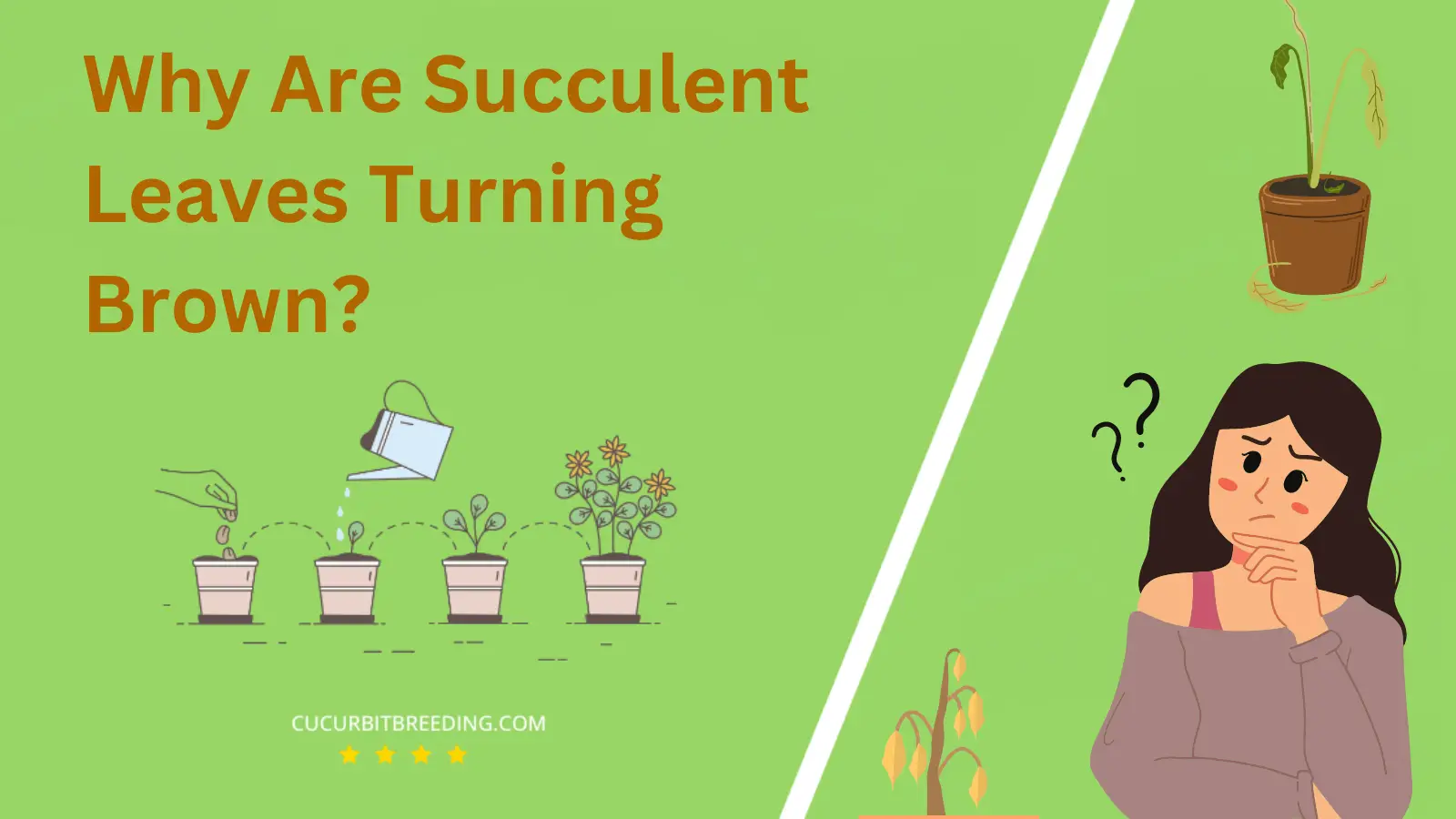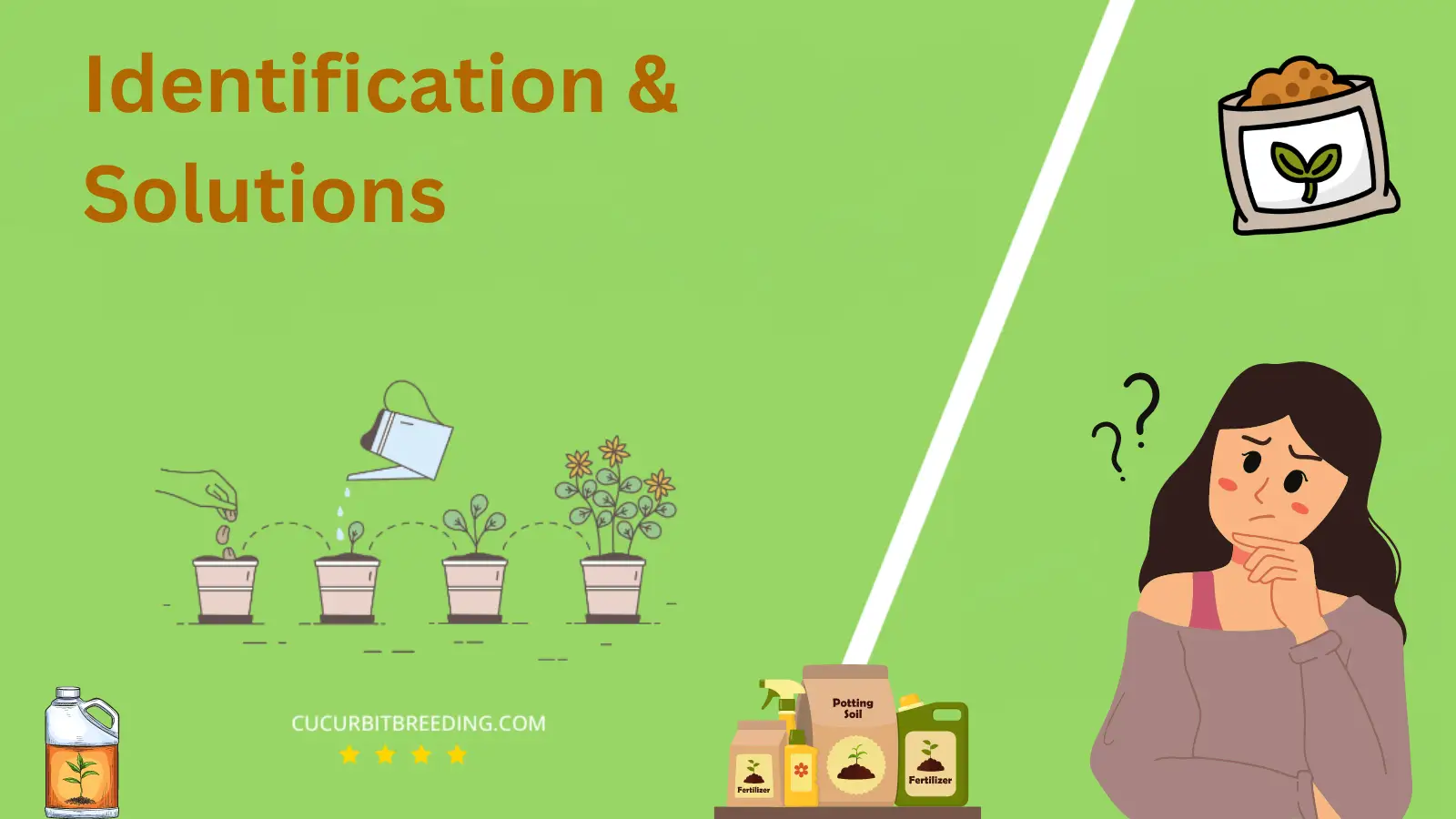
Oh, the agony of noticing your succulent leaves turning brown! A sight that leaves gardeners anxious and riddled with questions. You’ve invested time and love into creating your leafy oasis, but those pesky, brown-spotted leaves threaten your green utopia.
What’s causing this distressing transformation? Overwatering? Pests? Disease? Or could it be a natural process you weren’t aware of? Dive into our discussion below to unlock the mysteries behind this disturbing scenario and how to rescue your green companions.
Why Are Succulent Leaves Turning Brown?
There are several reasons why succulent leaves may be turning brown. The most common causes are overwatering, sunburn, frost damage, and disease. Overwatering results in root rot which eventually manifests on the leaves, turning them brown. Sunburn can scorch the leaves, causing them to change color. Frost damage can also lead to browning, especially in succulents not suited for cold temperatures. Lastly, various diseases can cause browning and should be considered.
1. Overwatering
| Description | Excessive water disrupts root function, leading to reduced oxygen supply and browning of succulent leaves. |
|---|---|
| Solution | Reduce watering frequency and ensure proper drainage to prevent excess moisture in the soil. |
Overwatering is a common reason why succulent leaves turn brown. When succulents receive excessive amounts of water, their roots become saturated, leading to root rot. This hampers the plant’s ability to absorb nutrients and water properly, resulting in brown and mushy leaves.
To address this issue, it is crucial to adjust the watering frequency and quantity. Succulents require infrequent watering, allowing the soil to dry out completely between waterings. Additionally, it is essential to provide well-draining soil and pots with drainage holes to prevent water accumulation.
By adopting a proper watering routine and ensuring the right conditions for drainage, succulent owners can prevent brown leaves caused by overwatering and maintain the plant’s health.
2. Underwatering
| Description | Insufficient water intake leads to dehydration, causing cells to die, resulting in brown discoloration. |
|---|---|
| Solution | Increase watering frequency to provide adequate moisture to the plant’s roots and prevent dehydration. |
The reason why succulent leaves are turning brown is due to underwatering. When succulents do not receive enough water, their leaves start to dry out and turn brown. This lack of water affects the overall health of the plant. To address this problem, it is important to ensure that succulents are watered adequately. A solution would be to establish a regular watering schedule for the plants, taking into consideration their specific water requirements.
It is important to thoroughly soak the soil and allow it to dry out before watering again to prevent overwatering. Additionally, placing the succulents in well-draining pots and using a well-draining soil mix can help prevent waterlogged roots and promote healthy growth.
3. Sunburn
| Description | Excessive exposure to sunlight damages cells, causing succulent leaves to turn brown (sunburn). |
|---|---|
| Solution | Provide shade or move to a location with indirect sunlight to prevent succulent leaves from turning brown. |
Sunburn can cause the leaves of succulent plants to turn brown. When succulents are exposed to excessive sunlight, their leaves can become scorched and damaged. This can occur when succulents are placed in direct sunlight for extended periods without any protection. The intense heat and ultraviolet (UV) radiation from the sun can cause the leaves to dry out and develop brown patches. To prevent sunburn on succulent leaves, it is important to provide them with adequate shade or indirect sunlight. Placing them near a window with a sheer curtain or using a shade cloth in outdoor areas can help filter out the harsh rays.
Additionally, gradually acclimating succulents to increased sunlight can also prevent sunburn. By exposing them to sunlight gradually and for shorter periods, the plants can build up their tolerance and develop a protective layer on their leaves. Regularly monitoring the amount of light succulents receive and making adjustments accordingly can ensure their leaves remain healthy and vibrant.
4. Fungal or bacterial infection
| Description | Excessive exposure to sunlight damages cells, causing succulent leaves to turn brown (sunburn). |
|---|---|
| Solution | Provide shade or move to a location with indirect sunlight to prevent succulent leaves from turning brown. |
The reason behind succulent leaves turning brown is often attributed to fungal or bacterial infections. These infections can negatively impact the plant’s health and appearance. When succulents are affected by fungal or bacterial infections, the leaves may start to turn brown as a response to the infection. The infection can spread from leaf to leaf, causing further discoloration and damage.
To address this problem, it is crucial to identify the specific fungal or bacterial infection affecting the succulent. This can be done by examining the affected leaves and seeking guidance from a plant specialist or horticulturist. Once identified, appropriate fungicides or bactericides can be applied to eliminate the infection. It is important to follow the instructions provided by the manufacturer and apply the treatment regularly until the infection is completely eradicated.
Additionally, ensuring proper care for succulents is essential in preventing and managing fungal or bacterial infections. It is crucial to avoid overwatering the plants, as excessive moisture can create a favorable environment for these infections to thrive. Providing well-draining soil, allowing the soil to dry out between waterings, and avoiding water accumulation in the plant’s container can help prevent infections. Furthermore, maintaining good air circulation around the succulent can also discourage the growth and spread of fungal or bacterial pathogens.
In summary, succulent leaves turning brown is often a result of fungal or bacterial infections. Identifying the specific infection and applying appropriate treatments, along with practicing proper care and maintenance, can help combat these infections and restore the health and appearance of the succulent plant.

5. Nutrient deficiency
| Description | Provide shade or move to a location with indirect sunlight to prevent succulent leaves from turning brown. |
|---|---|
| Solution | Provide a balanced fertilizer to replenish essential nutrients and prevent succulent leaves from turning brown. |
The reason why succulent leaves may turn brown is due to a nutrient deficiency. When succulents lack essential nutrients, it can result in discoloration and browning of their leaves. This issue affects the plant’s overall health and appearance, as the brown leaves can be unsightly and indicate a problem within the plant’s system.
To address this problem, providing the succulent with the necessary nutrients is crucial. One solution is to use a specialized succulent fertilizer that contains balanced levels of essential nutrients such as nitrogen, phosphorus, and potassium. This can be applied according to the product instructions, ensuring the plant receives the necessary nutrients to thrive. Additionally, it is important to ensure that the succulent is potted in well-draining soil to prevent waterlogged roots, which can further hinder nutrient uptake. Regularly inspecting and adjusting the watering schedule to meet the specific needs of the succulent is also essential in preventing nutrient deficiencies. By addressing the nutrient deficiency and providing the appropriate care, the succulent’s leaves can regain their vibrant color and overall health.
6. Pest infestation
| Description | Pest infestation causes succulent leaves to turn brown due to feeding and damage on the plant. |
|---|---|
| Solution | Apply insecticidal soap or neem oil to affected areas to eliminate pests causing browning of leaves. |
The reason why succulent leaves are turning brown is due to a pest infestation. Pest infestations can have detrimental effects on plants, including succulents. These pests, such as mealybugs or spider mites, feed on the plant’s leaves, extracting vital nutrients and causing damage. As a result, the leaves may start to turn brown and become discolored.
To address this issue, several solutions can be implemented. Firstly, it is important to identify the specific pest causing the infestation. Once identified, targeted pest control methods can be applied, such as using insecticidal soaps or neem oil, which are effective against common succulent pests. Regularly inspecting the plant for any signs of pests and promptly treating any infestations can help prevent further damage.
Another solution is to improve the plant’s overall health and resilience. Providing adequate sunlight, proper watering practices, and well-draining soil can help strengthen the succulent’s natural defenses and make it less susceptible to pests. Additionally, maintaining a clean environment around the plant, removing any dead leaves or debris, can help reduce the risk of pest infestations.
In conclusion, a pest infestation can cause succulent leaves to turn brown. Identifying and treating the specific pest, along with improving the plant’s overall health, are effective solutions to address this issue.
7. Physical damage
| Description | Physical damage to succulent leaves disrupts the vascular system, leading to brown discoloration. |
|---|---|
| Solution | Provide ample sunlight and ensure proper watering to prevent dehydration and leaf scorching. |
Physical damage can cause succulent leaves to turn brown. When succulent leaves are physically damaged, it disrupts their natural structure and can interfere with their ability to function properly. This damage can be caused by factors such as rough handling, accidental bumping, or even insect infestation.
To address this issue, it is important to handle succulent plants with care, avoiding any rough contact that could lead to physical damage. It is also crucial to regularly inspect plants for signs of insect infestation and take appropriate measures to eliminate pests if necessary. Additionally, providing a suitable environment with proper lighting, temperature, and humidity can help promote healthy leaf growth and reduce the risk of physical damage.
By taking these precautions and providing optimal care, succulent leaves can maintain their vibrant green color and remain healthy.